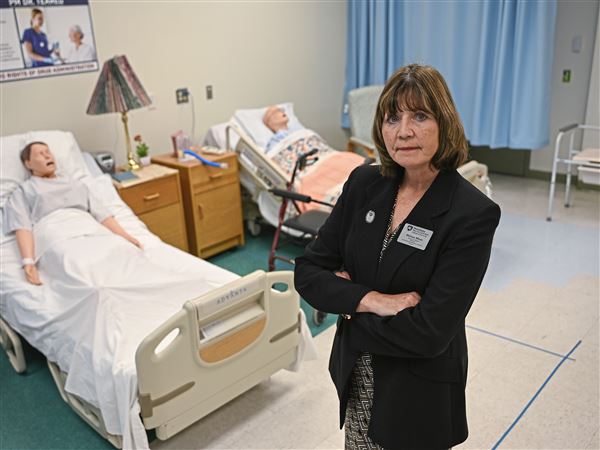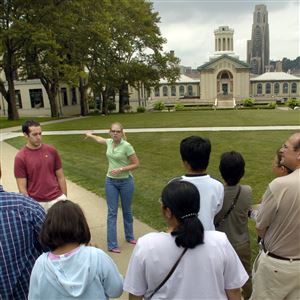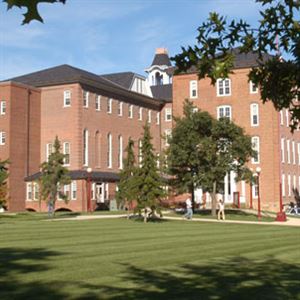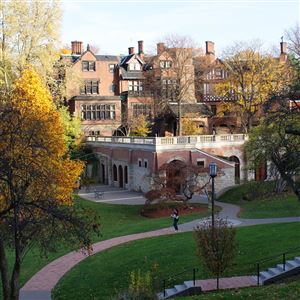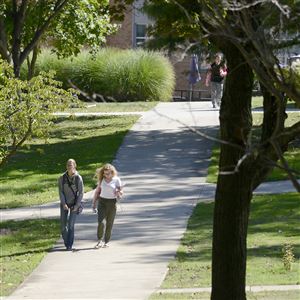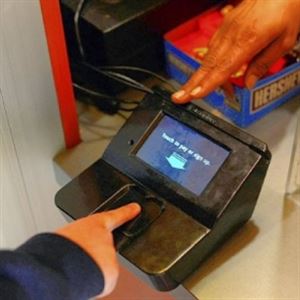When some students from the Charleroi Area School District started to participate in the Career Ready Graduates initiative last year, they learned that academic and technical proficiency aren’t enough to succeed in the workplace.
They also would need such skills as the ability to effectively communicate and collaborate.
As a result, when they came back to their district, they proposed courses they believed would help to develop those skills. The benefits of one of those courses — Public Speaking — was displayed last month when students gave presentations about their school district and community to real estate professionals at the Charleroi School District Showcase.
The presentation is exactly the type of experience that Charleroi Area superintendent Ed Zelich wants for students.
“Students do not get enough real-world application. These kids speaking in front of the community gives them experience in interpersonal relationships, creativity, collaboration and how to communicate,” he said.
That type of experience is one of the goals of the Career Ready Graduates initiative offered by the Consortium for Public Education, which recently received a $150,000 grant from the Heinz Endowments.
Another goal is to help students explore careers and to decide whether they want to attend a two-year or four-year college, a trade school or go straight to the workplace or military after high school — and to understand what preparation is required for each, said Mary Kay Babyak, the consortium’s executive director.
The consortium started the pilot Career Ready Graduates initiative in November 2015 and it currently involves nine other school districts in addition to Charleroi Area: Albert Gallatin Area, Allegheny Valley, Blackhawk, Greensburg Salem, Laurel Highlands, McKeesport Area, Montour, Woodland Hills and Yough.
The plan is to eventually expand it to other districts and build a network for sharing ideas.
Partnering in the effort with the Consortium for Public Education are about a dozen colleges; several dozen businesses; representatives of trade unions; and the Allegheny Conference on Community Development, which has conducted studies that show employers have identified skills gaps among recent graduates as well as employment gaps that will emerge in the region as baby boomer employees retire.
Through the initiative, K-12 students will be exposed to various types of workplaces and careers and both the hard and soft skills needed for workplace success.
Hard skills are defined as specific abilities that can be taught and measured and will get a student in the door with an employer. Soft skills are defined as less tangible traits that are needed for effective behavior and work style that will determine success in the workplace.
Teachers, administrators and counselors will be part of the process so they can help to best advise students about their futures, Ms. Babyak said.
Heinz Endowments decided to fund the effort because “we’re told time and time again that there is this skills gap that exists in industry and that schools are not producing the kind of students that can readily enter certain jobs,” said Stan Thompson, the endowment’s director for education programs.
Mr. Thompson said that while industry is identifying the skills needed in the workplace, it is not always in conversation with schools “about how they might create a curriculum to provide the skills that industry is looking for.”
The consortium, Mr. Thompson said, “is making a concerted effort to establish a partnership between industry and the schools on how do we prepare kids for jobs that exist and those that will evolve.’’
Ms. Babyak said one message she hopes students receive is that regardless of the profession they choose, most jobs of the future will require technical savvy. “Most employees are going to need to have some kinds of skills in addition to word processing. Most must have a basic understanding of coding,” she said.
In addition, she said, appropriate writing in the workplace can be a particular challenge for a generation of students who have grown up communicating via text messages.
The consortium’s initiative will put particular emphasis on providing career exposure to students in “under resourced” school districts, Ms. Babyak said.
For example, students may go into a bank and be aware of the teller’s job, but “they don’t know about all of the other departments such as technology, or data or marketing,” she said.
The same is true of a hospital, where students may be aware of the role of doctors and nurses but not realize the additional jobs and departments that are necessary there.
As classes have resumed in the districts participating in the initiative, new courses and activities are underway.
In the Charleroi Area district, courses have been added in personal finance and note taking. The personal finance course helps students determine how much money they will need to sustain the type of lifestyle they want and therefore the salary they need to earn. The note-taking course prepares them for postsecondary education.
In addition, Charleroi Area students are partnering with students from the Albert Gallatin Area School District to help develop a social media marketing campaign for a dry cleaning company, Model Cleaners. Students from the two districts met in September with representatives of Model Cleaners at one of its locations, said Beth Hutson, assistant superintendent for Albert Gallatin Area.
Albert Gallatin Area has long had a college and career emphasis in its district from the elementary through high school levels. But Ms. Hutson said the consortium’s recent initiative prompted the district to take a closer look at the soft skills students need to succeed.
She said teachers there did a curriculum audit to determine how they can incorporate training and practice for such soft skills as communication competencies, problem-solving strategies, organizational skills, time management and etiquette.
A report called “Bridging the Soft Skills Gap” by the Allegheny Conference on Community Development shows the disparity in views on soft skills between recent college graduates and employers.
Both sides agree that soft skills are important for career success. But the groups vary in their assessment of the quality of soft skills possessed by recent graduates.
According to the survey, 63 percent of recent college graduates believed they had good soft skills. But only 14 percent of employers agreed. The report showed that the gap in perceptions was greatest in the areas of commitment/accountability, written communications, time management, professionalism, and critical thinking/problem solving. And yet those skills skills are identified by employers as most critical.
Mr. Thompson, of the Heinz Endowments, said the Career Ready Graduates initiative “is an attempt to provide a solution.”
Mary Niederberger, former PG education writer: Marynied@msn.com. or Twitter, @MaryNied.
First Published: October 7, 2016, 4:00 a.m.
